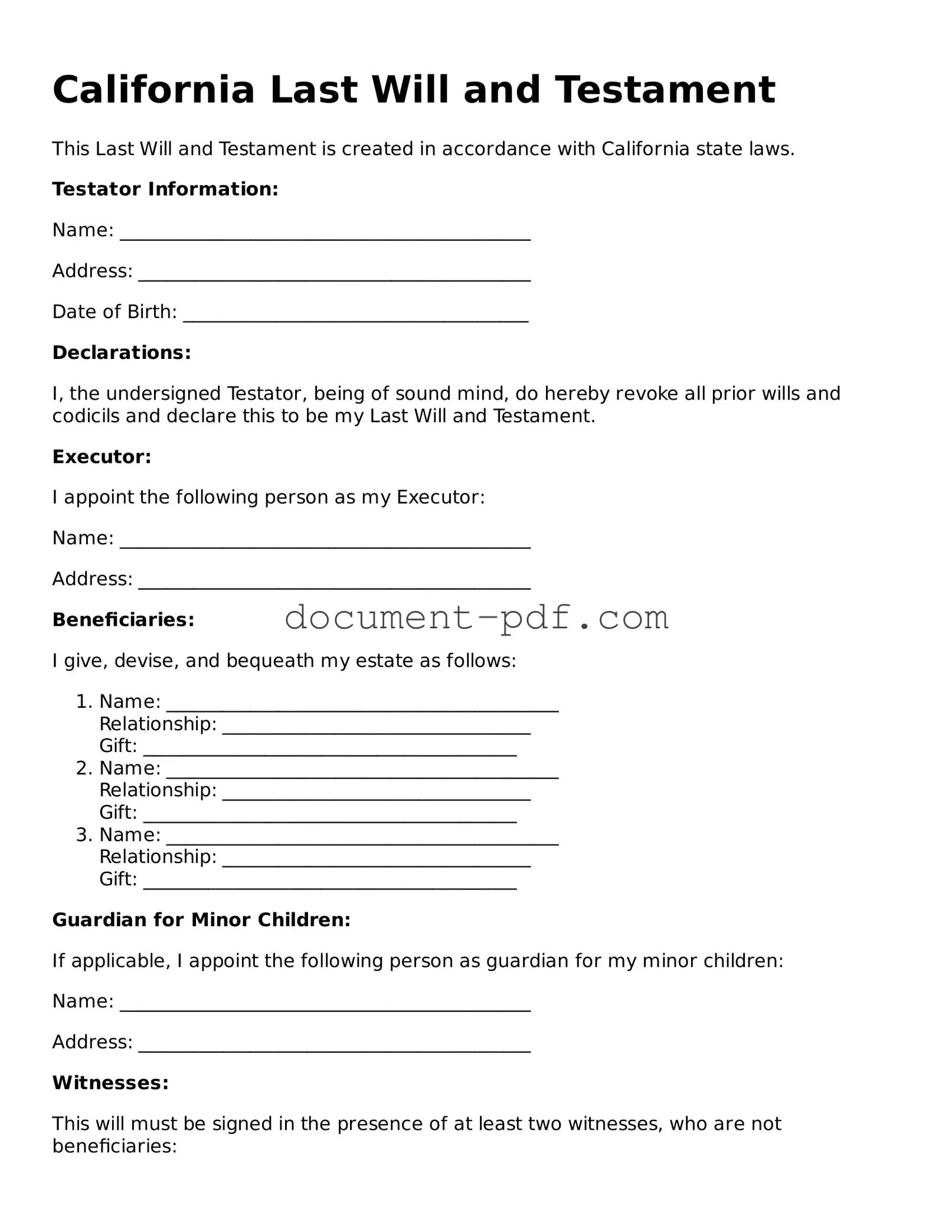California Last Will and Testament
This Last Will and Testament is created in accordance with California state laws.
Testator Information:
Name: ____________________________________________
Address: __________________________________________
Date of Birth: _____________________________________
Declarations:
I, the undersigned Testator, being of sound mind, do hereby revoke all prior wills and codicils and declare this to be my Last Will and Testament.
Executor:
I appoint the following person as my Executor:
Name: ____________________________________________
Address: __________________________________________
Beneficiaries:
I give, devise, and bequeath my estate as follows:
- Name: __________________________________________
Relationship: _________________________________
Gift: ________________________________________
- Name: __________________________________________
Relationship: _________________________________
Gift: ________________________________________
- Name: __________________________________________
Relationship: _________________________________
Gift: ________________________________________
Guardian for Minor Children:
If applicable, I appoint the following person as guardian for my minor children:
Name: ____________________________________________
Address: __________________________________________
Witnesses:
This will must be signed in the presence of at least two witnesses, who are not beneficiaries:
- Name: __________________________________________
Signature: ____________________________________
Date: ________________________________________
- Name: __________________________________________
Signature: ____________________________________
Date: ________________________________________
Signature of Testator:
Signed this ____ day of ____________, 20____.
Signature: __________________________________________
This document serves as my Last Will and Testament and is made freely and voluntarily.
